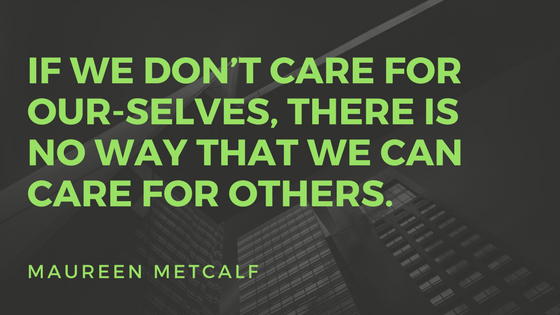Boosting Workplace Well-Being
Cameron Stockdale, CEO of the Work Wellness Institute, wrote this article as a companion to his podcast Boosting Workplace Well-Being. This podcast is part of the International Leadership Association Series.
| Podcast intro from “Faux Mo:” and ILI AI experiment:
Short clip from the interview: |
Link to the entire interview:
|
Listen to the companion interview and past episodes of Innovating Leadership: Co-Creating Our Future via Apple Podcasts, TuneIn, Spotify, Amazon Music, Audible, iHeartRADIO, and NPR One.
In a rapidly evolving world marked by technological advancements and constant innovation, the role of leadership has taken on a new significance. As we stand on the brink of an era filled with uncharted possibilities and formidable challenges, we must delve deeper into the critical aspects that shape leadership in this changing landscape. A storm is brewing, a flurry of change that promises to revolutionize the world of work as we know it. The scene is set for a transformation that demands a fresh understanding of leadership.
The Fading Value of Skills
Think back to a not-so-distant past when businesses depended heavily on specialized skills, each carefully crafted and aligned like the components of a complex machine. Employers sought out professionals with specific abilities, matching them intricately with detailed job descriptions. The outcome of this approach was a landscape of skills-based organizations where employees fit into precise moulds, each contributing to the corporate machinery. This method fostered a rigidity that made companies resistant to change. Specialized skills led employees into a comfort zone, and they became resistant to alterations in their roles. The fixed nature of these roles meant that companies found it difficult to evolve, and this resistance developed within the workforce. Consequently, it required considerable effort and innovative leadership to break free from this inertia, introduce new directions, and guide employees out of their entrenched positions.
But the winds of change do not respect tradition. As they began to blow, they slowly eroded the once impervious structure of skills-based architecture. Today’s highly prized skills are facing a short shelf-life, threatened by the relentless pace of innovation. Tomorrow’s world might consign many of today’s talents to the annals of history, leaving a crumbling façade where a formidable structure once stood. Consider a highly trained and specialized individual, perhaps an expert in their assigned role, but would prefer to keep their job description and resulting work unchanged. As the tides of business shift and new strategic priorities surface, this individual becomes an anchor weighing down the ship rather than a sail propelling it forward. To be a leader in this environment requires a new set of competencies to move the organization forward to take advantage of opportunities or avoid problems.
The New Horizon: Competencies
These changes, technology, labour market expectations, and ever-evolving regulation will force leadership to acknowledge the shifting paradigm to develop new competencies to survive, and is not merely a rhetorical proposition but a profound prediction. The dawn of a new age is upon us, marked by the need for flexibility, creativity, and readiness to navigate uncharted waters. The birth of new competencies, like the ability to identify opportunities and exercise creativity, heralds a radical departure from the norms of past leadership theories.
Take the ability to identify opportunities, for instance. It requires absorbing multifarious information, identifying patterns, and discerning potential opportunities at the intersection of these patterns. It requires a flexible and nuanced approach, blending critical thinking with intuitive insight.
Creativity, too, takes on new meaning. No longer a trait attributed solely to artists or designers, creativity emerges as a symbol of innovative thought and adaptation in a world where change is the rule, not the exception. It reflects a capacity to think outside the box, conjure inventive solutions to problems, and continually adapt to ever-shifting landscapes.
Consider that employee who clings dearly to their entrenched job description, refusing to take on new challenges or responsibilities. Adaptability becomes essential when the business landscape shifts, yet the person who remains anchored to the old ways is an obstacle rather than an ally to change. This behaviour prompts reflection on leadership’s role: What qualities must leaders possess to encourage flexibility and foster these essential new competencies?
The Emergence of Rapid Learners
The transforming landscape requires more than just a shift from skills like typing to competencies. It demands a new breed of professionals characterized by their ability to learn swiftly, assimilate new concepts, and apply them effectively. These “rapid learners” can skillfully navigate a volatile landscape, handle uncertainty, and maintain equilibrium amid chaos. Such people will survive and thrive, leading their organizations toward success. They will embody resilience and adaptability, flourishing in an environment where others falter. But what guides them? What nurtures these traits, and how can they be cultivated within the broader workforce? Leaders will need to foster a culture that emphasizes continuous learning and development. Employees must feel encouraged to explore, experiment, and even fail without fear of reprisal. Employees need the autonomy to make decisions, take risks, and learn from their experiences. Leaders who empower their employees can foster a sense of ownership and personal investment in one’s growth and the organization’s success.
The Evolution of HR
This profound transformation extends beyond individuals and influences the core of human resources practices. Hiring professionals must embrace a new perspective, shifting focus from what a candidate can do today to what they can potentially achieve tomorrow. Qualifications and experience, while still essential, must be augmented by assessing resilience, curiosity, adaptability, and a propensity for rapid learning.
In essence, the era of skills-based organizations is fading into obsolescence. The future demands an adaptable, flexible approach, where the ability to quickly handle change, spot opportunities, and learn becomes paramount. These new competencies, rising like a phoenix from the ashes of the old, herald the arrival of a new epoch, one where those equipped to harness the winds of change will lead the vanguard into a brave new world of work.
The Symphony of Leadership
We return to the question: What does it take to be a leader in this shifting landscape? The answer lies not in clinging to the old but in embracing the new. Leadership today requires a delicate balance of being anchored in core values while embracing the fluidity of change. It calls for wisdom to recognize the winds of transformation and the courage to set sail, riding the waves of innovation and adaptability.
In the wake of this storm of change, leaders must become the conductors of a new symphony, where the music continually evolves, and the melody resonates with the new world. It’s a symphony yet to be entirely composed, and it demands leaders who are both composers and performers, skilled in creating harmony amid uncertainty. It’s a grand composition that captures the essence of our time and sets the tone for the future. In this world of constant flux, leadership is not just a role but an art, the mastery of which will become the decisive factor in navigating an ever-changing landscape, enabling businesses and individuals to adapt, innovate, and succeed.
ABOUT THE AUTHOR:
Dr. Cameron Stockdale, an executive leader and scholar in the fields of leadership, innovation, technology, law, and organizational behavior, brings his extensive experience to bear in guiding positive change within organizations. Emphasizing an approach of ongoing growth and refinement, his work focuses on increasing efficiencies and bolstering team performance. Drawing from a substantial background in emergency services, including over 25 years of hands-on experience, Dr. Stockdale’s research is rooted in its practical applications. As the CEO of the Work Wellness Institute, a non-profit research organization dedicated to conducting global research and disseminating knowledge that fosters a positive workplace environment, Dr. Stockdale’s goal is to make research more accessible for workplaces and employers, with a focus on workplace health, wellness, and performance issues.
Besides his undergraduate education in Recreation Management and Paramedicine, Dr. Stockdale holds a Doctor of Education degree in Interdisciplinary Leadership from Creighton University, a Master of Laws degree in Innovation, Technology & Law from the University of Edinburgh, a Postgraduate Certificate in Organizational Behavior from Harvard University Extension School, and a Master of Arts degree in Leadership from the University of Guelph.
ILI congratulates partner Competent Boards on 5 years of educating current and future directors in over 50 countries!
Given the recent updates to the IFRS S1 and S2 standards, directors and management are required to disclose their sustainability competencies and who is qualified to oversee sustainability-related risks and opportunities in their organization. Taking a Competent Boards program and getting a designation/certification is an excellent way to meet this requirement.
Find the programs offered by Competent Boards here: https://competentboards.com/programs. As a subscriber to the Innovative Leadership Newsletter, you can use the code CB5 for a 5% discount.
Thank you for reading the Innovative Leadership Insights, where we bring you thought leaders and innovative ideas on leadership topics each week.
ADDITIONAL RESOURCES:
Ready to measure your leadership skills? Complete your complimentary assessment through the Innovative Leadership Institute. Learn the 7 leadership skills required to succeed during disruption and innovation.
- Follow the Innovative Leadership Institute LinkedIn page
- Subscribe to Innovating Leadership and listen on your favorite podcast platform
- Subscribe to our blog – Insights
Check out the companion interview and past episodes of Innovating Leadership, Co-Creating Our Future on your favorite podcast platform, including Apple Podcasts, TuneIn, Spotify, Amazon Music, Audible, iHeartRADIO, and NPR One.

 This blog post is the companion to a podcast with Mark Palmer and Belinda Gore,
This blog post is the companion to a podcast with Mark Palmer and Belinda Gore, 

